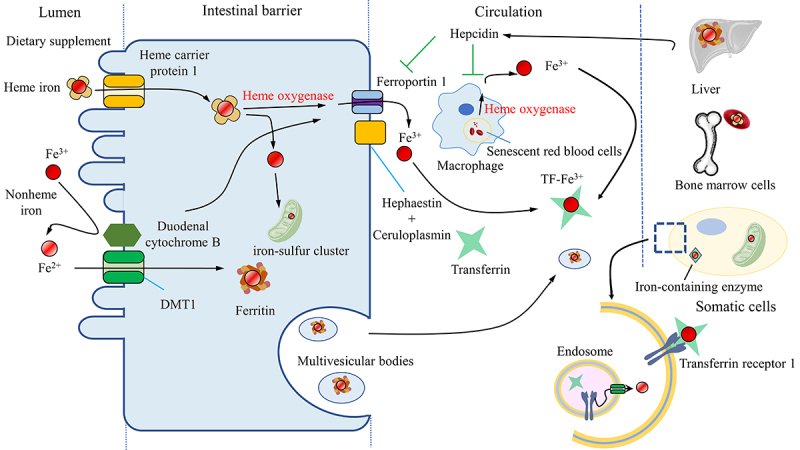Figure 1.

The iron cycle and metabolism. Iron is obtained from the diet in the form of heme or nonheme iron and is absorbed by enterocytes while Fe3+ is reduced to Fe2+ by reductase before being absorbed by the receptor DMT1. Macrophages phagocytose senescent blood cells, degrade heme via heme oxygenase and release free iron. The absorbed iron is then either stored in ferritin, used for the biosynthesis of iron-sulfur clusters, or exported by ferroportin1 with a multi-copper ferroxidase such as ceruloplasmin, which oxidizes Fe2+ to Fe3+ in the plasma membrane. Iron can also be exported with ferritin by multivesicular bodies. Iron in the blood is bound to transferrin, forming an iron-transferrin complex. This complex is transported to the liver for storage, to bone marrow cells for heme synthesis, and to other tissues for the synthesis of iron-containing enzymes. Cells take up iron through transferrin receptor 1-mediated endocytosis. Fe3+ is liberated from transferrin and subsequently reduced to Fe2+ by endosomal reductases. Hepcidin, secreted by the liver, either inhibits the degradation of ferroportin1 or directly blocks the channel, allowing iron to accumulate within the cell. DMT1, divalent metal-ion transporter-1.
